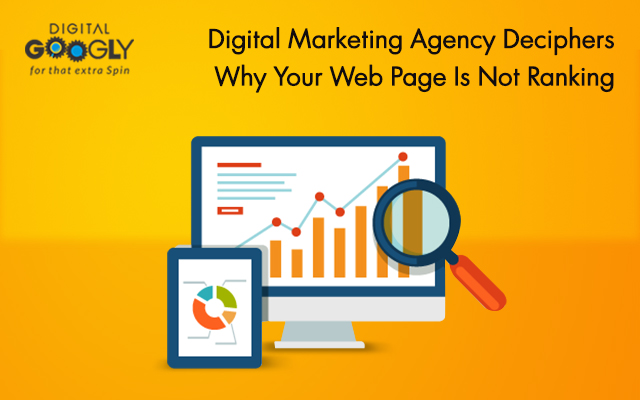Have you seen a sudden decline in your search engine keyword ranks for certain pages? Stop asking yourself questions like “Why isn’t my website ranking on Google?” Instead start looking for expert advice on “how to rank my website in search engine results pages?”
Your online visibility might be affectedwithin a few days, if your web pages aren’t performing properly on search engine results pages (SERPs). This means that your site will receive fewer visitors. And you know what happens next: your sales will suffer as well.
Once you discover the first indicators of overall SEO ranking drops, you must act quickly to improve your search engine optimisation strategy.
Being a top digital marketing agency in Kolkata, India, we have shared this blog, as it will explain the reasons behind the drop and provide practical advice on how to enhance your Google search ranking potential. We also emphasise the need of devoting effort to tracking and monitoring keyword rankings.
Reasons for Your Website’s Decline in Ranking and How to Regain It
Reason #1: Some Pages have NoIndex Tags
You may have let a “noindex” tag slip into the pages’ head section when tracking keyword rankings and discovering that certain valuable pages are not at all accessible in search results. The meta tag tells Google’s web crawler to ignore a web page when indexing it. Your web pages will not be able to rank in the SERPs until they are crawled and indexed.
How to Fix the Issue
Remove the “noindex” tag from the affected pages to improve SEO rankings. Go through the coverage report in Google Search Console to find out if the “noindex” problem is there. If your site is relatively new and you don’t have the required Search Console data, try using tools that crawl your website and show you which pages are affected by the Google search ranking issue.
Reason #2: Pages are not Crawlable by the Googlebots
A text file known as Robots.txt contains instructions for web crawlers like Googlebot. It is responsible for either allowing or blocking access to your pages. So, if it has a restriction that prevents Googlebot from crawling specific pages, the search engine won’t be able to find those pages. It may have an impact on the ranking and visibility of SERPs.
How to Fix the Issue
Fix it by allowing search engine bots access to key pages, such as https://xyz.com/blog. If you are not sure where to look for robots.txt, here is a quick way to increase your Google Search ranking: delegate the task to a professional digital marketing agency in Kolkata, India. Since they understand the scope and restrictions of a robots.txt file, this should help you avoid serious technical SEO errors.
Reason #3: Your Website has Got Duplicate Content
Plagiarism might be found on a single page or across multiple pages. Google only shows the canonical version, also called the source URL or master copy, when two URLs have a substantial amount of the same content or they lead to the same page. You tell Google which copy to display in the SEO keyword rankings when you use the canonical tag.
How to Fix the Issue
You can repair it by deleting the duplicate content. However, you should insert the rel=canonical attribute in the head section of the master copy and duplicate pages.
In both cases, the canonical tag is utilised as follows:
<link rel=”canonical” href=”https://xyz.com />
Reason #4: Your Website has just been Launched
While some may think this is self-evident, others may be perplexed by search engine keyword ranks or lack a strategic SEO plan for their brand-new website. It is important to understand that ranking at the top of the SERPs takes time. Google should be allowed to crawl your website from the minute it goes online. Consider how elements such as user experience (UX), content quality, security, and presence on Google My Business (GMB) listings get affected when your SEO services kick in. It could take anywhere from a few months to a year. Some pages may climb to the top of the SEO search rankings rapidly, while others may take longer.
How to Fix the Issue
How do you get your website to rank then? First, if you haven’t done it yet, submit your sitemap to Google. You can use any of Google’s supported formats, including text, RSS, XML, mRSS, and Atom 1.0. Click Sitemaps under the Index section in Google Search Console and enter the sitemap URL.
Conclusion
You should easily answer the question “how to rank a website” after reading this blog. The implementation, though, is far more difficult. Nevertheless, we hope you now have a clearer understanding of how it is done and how you can start.
If you are short on time and prefer to delegate hard tasks to professionals, consider the following advantages: no guesswork about errors, proper prioritisation, and increased optimisation. When all of the above factors are combined, you’ll get great outcomes and cost-effective control of your page rankings.
At Digital Googly,we have helped clients maximise their time, effort, and money by performing long-term search engine optimisation efforts. Our digital marketing experts in Kolkata, India keep track of keyword rankings and look for problems in a systematic way. In a proactive manner, we respond and mitigate risks, as well as provide solutions.
